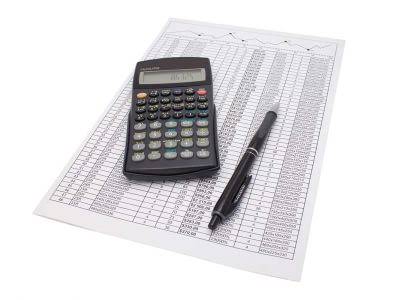You know the sum of your debits and credits must match at the end, but so far, you have a 30,000 dollars debit and a 5,000 dollars credit. You still need to record a 25,000 dollars credit to get the transaction to balance. The last piece of your transaction is to record the 25,000 dollars what is cost principle your business borrowed to purchase the truck.
- Just like journalizing, posting entries is done throughout each accounting period.
- Using T Accounts, tracking multiple journal entries within a certain period of time becomes much easier.
- For the revenue accounts, debit entries decrease the account, while a credit record increases the account.
- Understanding the difference between credit and debit is essential for this process.
- The left side of the Account is always the debit side and the right side is always the credit side, no matter what the account is.
- When updating your books, you need to record that you used some of your cash, that you now own a truck, and that you also owe 25,000 dollars on it.
- Its core functions of recording, analyzing, and presenting financial data are vital for transparency, efficiency, and compliance.
Debit and Credit Entries
So, to show this, T-accounts are usually displayed in pairs to show the impact of a complete business transaction in your accounts. Debits and credits can mean either increasing or decreasing for different accounts, but their T Account representations look the same in terms of left and right positioning in relation to the “T”. Let us understand the format of a T account ledger and how it is designed in a way where it gives the individual reviewing it an ease of locating entries. A business owner can also use T-accounts to extract information, such as the nature of a transaction that occurred on a particular day or the balance and movements of each account. You wrote a check for 5,000 dollars which reduced your Cash account. We’ve been developing and improving our software for over 20 years!
Adjusting Entries
A general ledger is a formal representation of a company’s financial statements where the debit account and credit account records are validated with a trial balance. A general ledger offers comprehensive documentation of all financial transactions of the company over a certain period. A general ledger is the repository of all account-related information required to prepare a financial statement. The typical accounts include accounts of assets, liabilities, shareholders’ equity, revenues, and expenses, etc.
The impact of accounting on business operations extends beyond financial reporting, influencing risk management and ethical governance. As the digital age brings new technologies and methodologies, the role of accounting continues to evolve, offering new opportunities for strategic insight and innovation. By adapting to these changes, accounting professionals can continue to provide invaluable support to businesses navigating the complexities of the modern economic landscape.
Thousands of people have transformed the way they plan their business through our ground-breaking financial forecasting software. In the world of business, there’s a critical distinction between different types of profit that can impact decisions at every level. Any investor with a genuine interest in the business will want to see detailed financial pitch deck slides to gain an understanding of…
The Evolving Role of Accounting in the Digital Age
For example, through variance analysis, businesses can detect deviations from budgeted figures and address underlying issues promptly. This proactive approach not only safeguards a company’s assets but also enhances its reputation among investors and clients. Furthermore, accounting variable consideration contributes to the ethical governance of businesses by ensuring compliance with financial regulations and upholding corporate integrity.
Company
The credits and debits are recorded in a general ledger, where all account balances must match. The visual appearance of the ledger journal of individual accounts resembles a T-shape, hence why a ledger account is also called a T-account. Since most accounts will be affected by multiple journal entries and transactions, there are usually several numbers in both the debit and credit columns. Account balances are always calculated at the bottom of each T-account. The total difference between the debit and credit columns will be displayed on the bottom of the corresponding side. In other words, an account with a credit balance will have a total on the bottom of the right side of the account.
Rent Account
For more insights, visit our accounting general journal entries. T-accounts also help manage income statement accounts like revenues, expenses, gains, and losses. Knowing how these entries affect the income statement is crucial for financial analysis. Even with the disadvantages listed above, a double entry system of accounting is necessary for most businesses. This is because the types of financial documents both businesses and governments require cannot be created without the details that a double entry system provides. These documents will allow for financial comparisons to previous years, help a company to better manage its expenses, and allow it to strategize for the future.
If you want a career in accounting, T Accounts may be your new best friend. A T account ledger is an informal way of addressing a double-entry bookkeeping system. On the top, the name of the ledger is mentioned, the left side is for debit entries, and the right side is for credit entries within the ledger. It is essentially a visual or graphical representation of the company’s accounts which can be used to present, scrutinize, or review. Once journal entries are made in the general journal or subsidiary journals, they must be posted and transferred to the T-accounts or ledger accounts.
- For a lot of people, the balance sheet is one of the hardest financial statements to get to grips with.
- Any investor with a genuine interest in the business will want to see detailed financial pitch deck slides to gain an understanding of…
- Each journal entry is transferred from the general journal to the corresponding T-account.
- The debits are always transferred to the left side and the credits are always transferred to the right side of T-accounts.
- For instance, a company hires some extra temporary labor for a busy period in their factory.
- T-accounts can display transactions from a specific time period such as a week or a month.
While many businesses rely on accounting software today, understanding T-accounts remains essential for financial accuracy and decision-making. T-accounts break down transactions into clear debit and credit entries, making it easier to follow the movement of money. T-accounts can display transactions from a specific time period such as a week or a month. By displaying multiple transactions over a time period rather than a single transaction, it allows people to see a picture of a company’s activities. By breaking transactions down into a simple, digestible form, you can visualise which accounts are being debited and which are being credited.
Below is a short video that will help explain how T Accounts are used to keep track of revenues and expenses on the income statement. T Accounts are also used for income statement accounts as well, which include revenues, expenses, gains, and losses. Debits and Credits are simply accounting terminologies that can be traced back hundreds of years, which are still used in today’s double-entry accounting system. They give you a clear, visual snapshot of each account’s activity.
A double entry system is a detailed bookkeeping process where every entry has an additional corresponding entry to a different account. Consider the word “double” in “double entry” standing for “debit” and “credit”. The two totals for each must balance, otherwise there is an error in the recording. Any transaction a business makes will need to be recorded in the company’s general ledger.
If you’re trying to figure out how to record a transaction, T accounts can help. For more detailed examples of how to use T-accounts in accounting, check out our sections on journal entry examples and journal entry sample. In this,the cash account goes up by what is the margin of error and how to reduce it in your survey $1,000 (debit), and the sales revenue account also goes up by $1,000. T-accounts make it easy to see how each transaction affects your accounts, helping you keep track of all the ins and outs. The left side of the T-account is for debits, and the right side is for credits.




